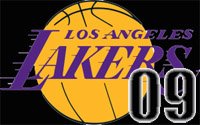So, with that in mind, let's take a look at pitch counts and determine
- whether pitch counts are beneficial to maintaining arm health for pitchers
- whether Mike Scioscia is particularly bad at managing starter pitch counts
Note: You'll notice I'm dealing with mostly '90s and later pitchers here. There's a reason for that. I maintain, with a great deal of confidence, that sufficient changes in the game since the late '80s have made statistics between the two decades suspect in direct comparison. Therefore, if you want to talk about how Nolan Ryan threw millions of pitches and was fine, well, you're right. He also had a far bigger mound and countless other advantages, including crappier hitters, that helped.
To start, let's take a look at this article from Baseball Prospectus. Published in 1998, the article is ten years old and represents the approximate start of true pitch count analysis. This shows the creation and discussion of the PAP stat, that is, pitcher abuse points. Basically, a pitcher is assigned a point value for every pitch over 100 that he throws in a start. The scale increases, so pitch 101 is only worth 1 point, but pitch 121 is worth 3. Just from looking at that article, you'll see some familiar names: Roger Clemens, Bartolo Colon, Curt Schilling, Pedro Martinez. You'll also see Jaime Moyer, Andy Pettite, and Randy Johnson. Clearly, not all of these pitchers had serious arm issues, but many of them, Colon and Martinez in particular, had their careers essentially ended by strings of elbow and shoulder injuries.
But a pitch count by itself is not a generally useful stat. I know, you're saying "Marcus, it sounds like you're contradicting yourself here." Well, sorta.
Let's look at two hypothetical games. In the first game, Pitcher A throws 9 innings and a total of 120 pitches. That means he's had a moderately good game, probably a shutout or something close, and had to throw an average of 13.3 pitches/inning. And, for the sake of this exercise, let's say he never threw more than 15 pitches/inning.
In the second game, Pitcher B throws 6 innings and a total of 90 pitches. On the surface, this seems safer for Pitcher B's arm. But his pitch count per inning looks much different. He threw very few pitches in every inning but the second, where he threw 41 pitches.
If I were looking for the starter I'd rather have 5 days later, I choose pitcher A, despite his throwing 30 more pitches.
This is where pitch counts lie. Most pitchers in the majors have a stringent conditioning routine which keeps them in top shape for and during the season. As such, most pitchers can throw 120+ pitches with relative ease IF, and again, IF, they get ample rest and aren't forced to throw too many at once. This is why the injury rate for modern pitchers isn't higher than pre-'90s pitchers, despite the higher level of competition and general increased velocities and variety of breaking balls.
You'll notice I said the injury rate for modern pitcher's isn't higher than pre-90s pitchers. I realize you'd expect it to be lower. But it isn't, despite an emphasis on pitch counts. That's misleading. When a pitcher, particularly in the AL, has to go through a lineup where the shortstop is hitting .310, you realize how different the game is from the days when shortstops routinely hit below .250. Additionally, with the decline of the low-average, all-glove infielder, pitchers have been in front of less effective defenses, again forcing them to work harder to get through a more impressive lineup.
Last season's PAP ratings are here. Generally, younger pitchers have more to lose from abuse than older pitchers, as their arms seem less capable of handling the additional stress. The rule of thumb is that a pitcher should never throw more than 50 innings over his previous season's high. Thus, most pitchers throw around 150 innings in the minors and can get to the major league standard of 200 in their first year. This is an analysis of risky pitchers for 2009 from a fantasy baseball perspective, and it shows data which does a better job of explaining pitcher injury risk than a simple pitch count.
So, here's what we've learned. Pitch counts are important, but they are a blunt instrument. They help keep pitchers safe from overwork, but they tell an incomplete story. 5 tired pitches are always worse than 5 easy pitches, and pitch counts don't take into account the type of pitch, which can have a large impact, and the condition of the pitcher, which is even more important. But blanket statements like "pitch counts are useless" are even more dangerous, because pitch counts still serve as effective safety nets, as evidenced by the relatively level injury rate for pitchers across generations.
Which brings us to Mike Scioscia. In the game which prompted the "Scioscia is a nut" fanpost, John Lackey had thrown 114 pitches through 7 innings. This is what I like to call Not Good, and leaving him in would have been a colossal mistake. Scioscia has a soft pitch count limit, and has since I began watching the Angels. If a starter has fewer than 95 pitches entering an inning, he gets a short leash to finish the inning. If he finishes an inning with more than 95 pitches, he's done. This isn't a bad strategy, but it looks awful this season because the bullpen has been so bad. The Angels have likely lost a couple games as a result of the bullpen being asked to get outs, but I'd rather have healthy starters than two wins in April.




No comments:
Post a Comment